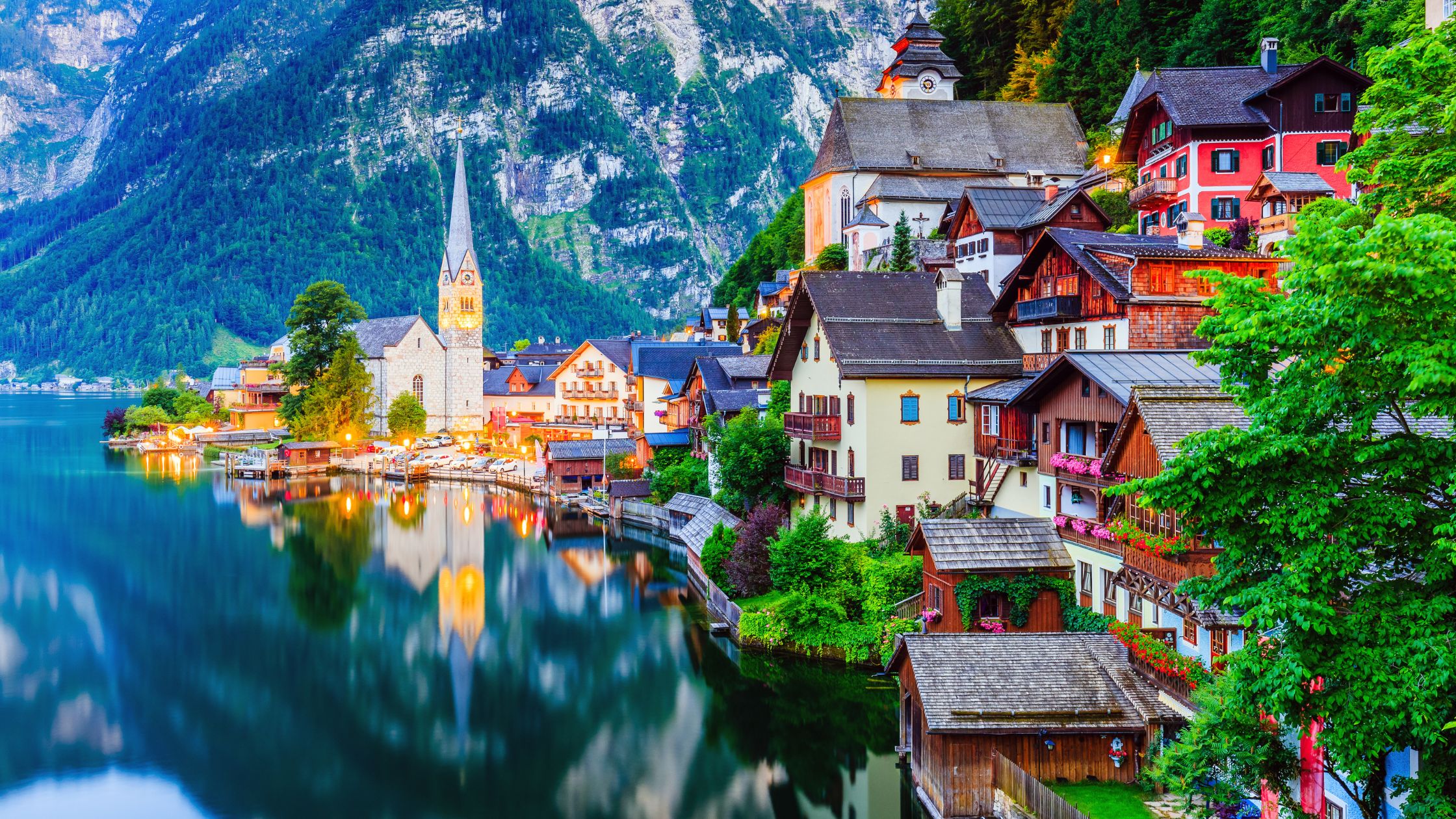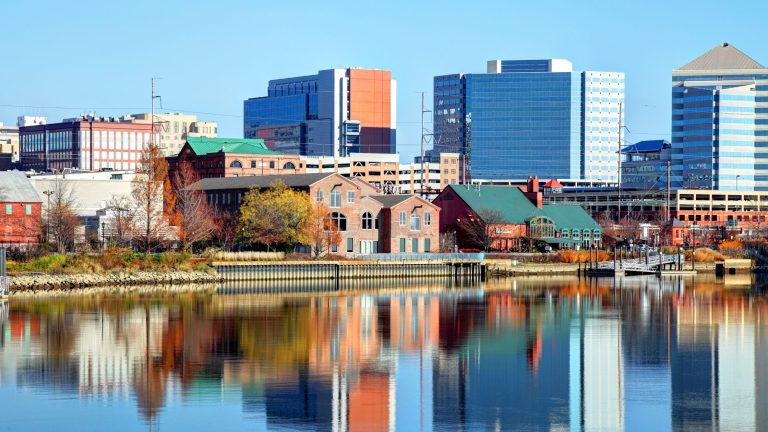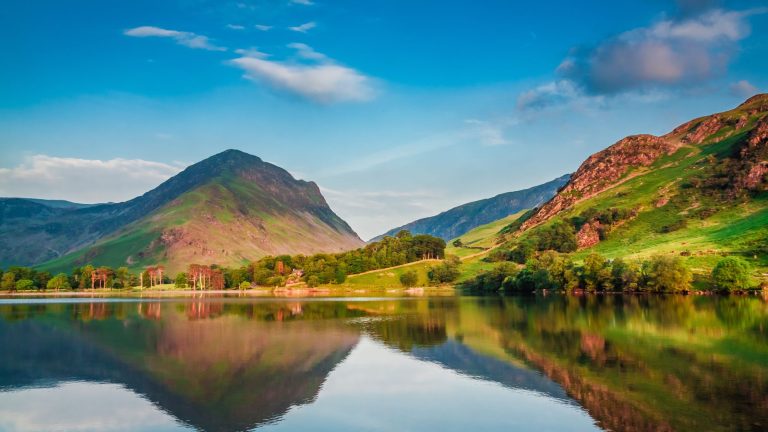The Best Time to Visit Austria: A Complete Seasonal Guide to Alpine Lakes, Imperial Cities, and Mountain Magic
Austria unfolds differently with each passing season, revealing distinct personalities that reward travelers who understand its rhythms.
From the crystalline waters of Wörthersee warming under June sunshine to the snow-dusted Christmas markets of Salzburg, from the golden larch forests surrounding Achensee in October to the pristine powder days at Innsbruck’s Nordkette, timing transforms every Austrian experience.
This comprehensive guide navigates the nuances of Austria’s seasonal calendar, helping you align your travel dreams with the perfect moment to make them a reality.
Understanding Austria’s Seasonal Symphony
The Austrian landscape operates on multiple temporal frequencies. While Vienna’s coffeehouses maintain their timeless elegance year-round, the country’s alpine lakes shift dramatically between seasons. The Salzkammergut region’s 76 lakes transform from summer swimming paradises to winter sanctuaries. Meanwhile, the wine regions of Burgenland pulse with harvest energy in autumn, and Tyrol’s ski resorts awaken with the first November snowfall.
The Geography of Timing
Austria’s diverse topography creates microclimates that savvy travelers can explore. The southern lakes of Carinthia, namely Wörthersee, Millstätter See, and Weissensee, benefit from Mediterranean influences, warming faster and maintaining swimmable temperatures longer than their northern counterparts. The Pannonian plain around Neusiedler See experiences continental extremes. At the same time, the Inn Valley creates its own weather patterns that affect everything from Innsbruck’s cultural calendar to the clarity of Achensee’s waters.
Spring: March to May
March: The Transition Month
As winter loosens its grip, Austria enters a fascinating transitional phase. The Arlberg ski region still offers excellent conditions at altitude, while valley floors begin their transformation. The historic center of Graz emerges from winter’s quiet, its UNESCO World Heritage streets gradually filling with café tables. Lake Wolfgang’s ferry services tentatively resume, connecting St. Wolfgang, St. Gilgen, and Strobl as ice risk diminishes.
For culture enthusiasts, March brings Vienna’s spring concert season into focus. The Vienna State Opera and Musikverein maintain robust programs, while hotel rates remain appealingly low. The Albertina Museum and Kunsthistorisches Museum offer crowd-free viewing of masterworks by Klimt, Schiele, and Bruegel.
April: Cherry Blossoms and Alpine Transitions
April paints Austria in pastels. The Wachau Valley’s apricot orchards burst into bloom, creating ethereal landscapes along the Danube between Melk Abbey and Dürnstein. Cherry trees frame the Mirabellgarten in Salzburg, where the Von Trapp family once sang in The Sound of Music. Lake promenades from Hallstatt to Bregenz awaken with the first outdoor dining setups of the year.
This month rewards photographers and budget-conscious travelers. Morning mists lift from Hallstätter See to reveal the iconic village in soft light, without summer’s crowds. The Grossglockner High Alpine Road typically opens in late April, offering early access to Austria’s highest peak and the Pasterze Glacier. Water temperatures remain brisk—typically 10-12°C in most lakes—but SUP boards and kayaks emerge on calm afternoons.
May: The Sweet Spot Emerges
May might be Austria’s best-kept secret. The entire country operates at peak beauty with minimal crowds. Meadows surrounding Kitzbühel explode with wildflowers, while hiking trails throughout the Ötztal Valley become accessible up to 2,000 meters. Southern lakes like Faaker See and Klopeiner See approach 18-20°C, making them viable for hardy swimmers.
Cultural events multiply: the Vienna Festival kicks off, Salzburg Whitsun Festival brings world-class performances to Mozart’s birthplace, and the Graz Spring Festival celebrates contemporary arts. Mountain bikers discover empty trails around Saalbach-Hinterglemm, while the Danube Cycle Path offers perfect temperatures for long-distance touring.
Summer Crescendo: June to August
June: Peak Balance
June delivers Austria’s most reliable combination of warm weather, long days, and manageable crowds. The summer solstice brings nearly 16 hours of daylight, transforming lakeside evenings into extended golden hours. Wörthersee reaches 22°C, warm enough for leisurely swims from the exclusive Beach Club at Falkensteiner Schlosshotel Velden. The Bregenz Festival begins preparations for its spectacular floating stage on Lake Constance.
Mountain refuges throughout the Hohe Tauern National Park fully open, enabling multi-day treks. The Adlerweg (Eagle’s Walk) across Tyrol becomes fully accessible, while via ferratas around Dachstein offer thrilling exposure. In Vienna, the Danube Island Festival brings free concerts to Europe’s largest open-air festival venue.
July: High Summer Glory
July transforms Austria into Central Europe’s outdoor playground. Lake temperatures peak—Wörthersee often reaches 25°C, while even typically cool Achensee warms to 20°C. The Salzburg Festival launches with world-premiere productions, drawing international audiences to the city’s baroque squares. Every major lake operates full ferry schedules, with special sunset cruises on Attersee and Wolfgangsee.
The cycling calendar explodes: the Tour of Austria traverses spectacular alpine passes, while casual riders enjoy the Lake Constance Cycle Path and the Tauern Cycle Path. Music fills the mountains with events like the Tyrolean Festival Erl and the Carinthian Summer Music Festival. Hotels like the Grand Hotel Zell am See and Hotel Sacher Salzburg command peak rates, requiring reservations months in advance.
August: Peak Season Intensity
August brings maximum warmth and maximum crowds. The Danube reaches its warmest for swimmers at the Alte Donau in Vienna, while Neusiedler See becomes a windsurfing and kitesurfing mecca. The prestigious Salzburg Festival continues its run, complemented by the Ars Electronica Festival in Linz exploring digital arts and technology.
Mountain conditions reach their prime: the Stubai Glacier offers summer skiing, while climbers tackle the Grossglockner via the normal route from the Erzherzog-Johann-Hütte. Lake beaches from Mondsee to Millstätter See buzz with families, requiring early arrival for prime spots.
Autumn Gold: September to November
September: The Second Sweet Spot
September rivals June for the title of Austria’s ideal month. Water temperatures remain swimmable through mid-month—Wörthersee maintains 20°C into late September. The Wachau Valley begins its wine harvest, with Grüner Veltliner and Riesling reaching perfection. Hiking conditions become sublime: stable weather, clear visibility, and comfortable temperatures make this prime time for ambitious routes like the Berliner Höhenweg.
Cultural life intensifies as Viennese return from summer holidays. The Vienna Contemporary art fair energizes the capital, while Ars Electronica in Linz peaks with its interactive technology exhibitions. The Venice Biennale influences spill into Graz and Innsbruck galleries. Hotels offer “golden autumn” packages, combining cultural experiences with harvest cuisine.
October: Larch Forests and Wine Harvests
October transforms Austria’s larch forests into golden cathedrals. The Lärchengold (golden larch) phenomenon peaks around Seefeld and the Ötztal Valley, creating photographer’s paradise conditions. Burgenland’s wine harvest reaches its crescendo—estates like Schloss Esterházy, Heinrich, and Umathum open their cellars for tastings of Blaufränkisch and Sankt Laurent.
Mountain railways extend weekend operations for leaf-peepers: the Nordkettenbahn above Innsbruck, the Dachstein Glacier cable car, and the Schmittenhöhebahn above Zell am See offer spectacular autumn panoramas. Thermal spas like Therme Geinberg and Aqua Dome in Längenfeld report their highest satisfaction scores as cool air enhances the hot spring experience.
November: Quiet Exploration
November brings Austria’s quietest month, perfect for solo and inquisitive travelers. Cities maintain full cultural programs—the Vienna State Opera, Burgtheater, and Konzerthaus operate at full capacity with easy ticket availability. Mountain regions pause between seasons, offering exceptional value for travelers seeking solitude.
Museums unveil major winter exhibitions: the Leopold Museum’s Schiele collections, the Belvedere’s Klimt masterpieces, and Innsbruck’s Tyrolean State Museums receive undivided attention. Wine taverns (Heurigen) around Vienna serve the year’s new wine (Heuriger) with traditional comfort foods like Tafelspitz and Wiener Schnitzel.
Winter Enchantment: December to February
December: Advent Magic
December transforms Austria into a life-sized snow globe. Christmas markets illuminate every major square from Vienna’s Rathausplatz to Innsbruck’s Old Town. The Salzburg Advent Market, one of the world’s oldest, fills the Residenzplatz with artisan crafts and the aromas of Glühwein. Silent Night Chapel in Oberndorf commemorates the carol’s 1818 composition with special concerts.
Ski resorts hit their stride: St. Anton am Arlberg, Kitzbühel, and Sölden offer pristine conditions, while glacier resorts like Stubai and Kaunertal guarantee snow. Lake destinations like Zell am See combine skiing at Kaprun Glacier with lakeside Christmas markets. Hotels offer special Advent packages that include market visits, concert tickets, and traditional dinners.
January: Alpine Perfection
January delivers Austria’s most reliable ski conditions. The Hahnenkamm downhill in Kitzbühel attracts the world’s best skiers, while recreational skiers enjoy empty slopes mid-week. Thermal spas reach peak appeal—the contrast between snow-covered landscapes and warm thermal waters at Therme Bad Gastein or Therme Amadé creates unforgettable sensory experiences.
Vienna’s ball season launches with the Vienna Philharmonic Ball, followed by over 450 balls through Fasching (carnival season). The Mozartwoche in Salzburg celebrates the composer’s birthday in January with world-class performances. Ice skating becomes magical at Weissensee, Europe’s largest natural ice-skating surface, and Vienna’s Rathausplatz rink.
February: Winter’s Final Act
February maintains excellent snow conditions while daylight hours begin extending. Semester break brings Austrian families to the slopes, creating lively but not overwhelming resort atmospheres. The Ski World Championships rotate through Austrian venues, while FIS World Cup races continue at venues like Schladming and Semmering.
Cultural highlights include the Opernball (Opera Ball) at Vienna State Opera, Austria’s most prestigious social event. Lakes like Achensee offer winter hiking trails with crystalline air and dramatic frozen shorelines, while cross-country skiing reaches ideal conditions throughout the Nordic ski regions.
Matching Your Travel Style to Austria’s Seasons
For Families
Late June and early September offer the sweet spot: warm lake waters, operational mountain lifts, and reasonable crowds. Properties like Kinderhotel Buchau at Achensee and Dorfhotel Fasching at Fischbach provide dedicated family programs. The Salzburger Sportwelt’s summer toboggan runs and Innsbruck’s Alpine Zoo ensure entertainment regardless of weather.
For Couples
May and October are peak for Austrian romance. Spring brings empty hiking trails and blooming meadows, while autumn adds golden forests and harvest cuisine. Book lakeside suites at Hotel Post am See in Pertisau or mountaintop luxury at Hotel Hochschober on Turracher Höhe. Thermal spa experiences at Rogner Bad Blumau or Therme Laa enhance couple’s retreats.
For Cultural Enthusiasts
Align visits with Austria’s festival calendar: Salzburg Festival (July-August), Bregenz Festival (July-August), Vienna Festival (May-June), or Innsbruck Early Music Festival (August). Off-season months like November and March offer crowd-free museum access and readily available opera tickets at venues like Graz Opera and Linz Musiktheater.
For Adventure Seekers
June through September optimizes mountain activities: via ferratas, mountain biking, paragliding, and high-altitude hiking. Winter sports enthusiasts should target January-February for optimal snow and December or March for better value. The Ötztal offers year-round adventure with its unique combination of glaciers, climbing venues, and the Area 47 adventure park.
Final Recommendations: Making Your Austrian Moment
Austria rewards intentional timing. Choose June or September for the optimal balance of weather, water temperatures, and cultural offerings. Select July-August for family lake holidays with guaranteed warm weather. Target December-February for winter sports and Christmas market leisure. Embrace shoulder seasons—particularly May and October—for exceptional value and authentic local experiences.
The country’s compact size enables multi-region exploration: combine Vienna’s imperial grandeur with Salzkammergut’s lake serenity, or pair Innsbruck’s alpine adventures with Graz’s culinary innovations. Whatever season you choose, Austria delivers experiences that resonate long after departure: the echo of an alpine horn across a still lake, the taste of Sachertorte in a baroque café, the sensation of floating in thermal waters while snow falls softly around you.






